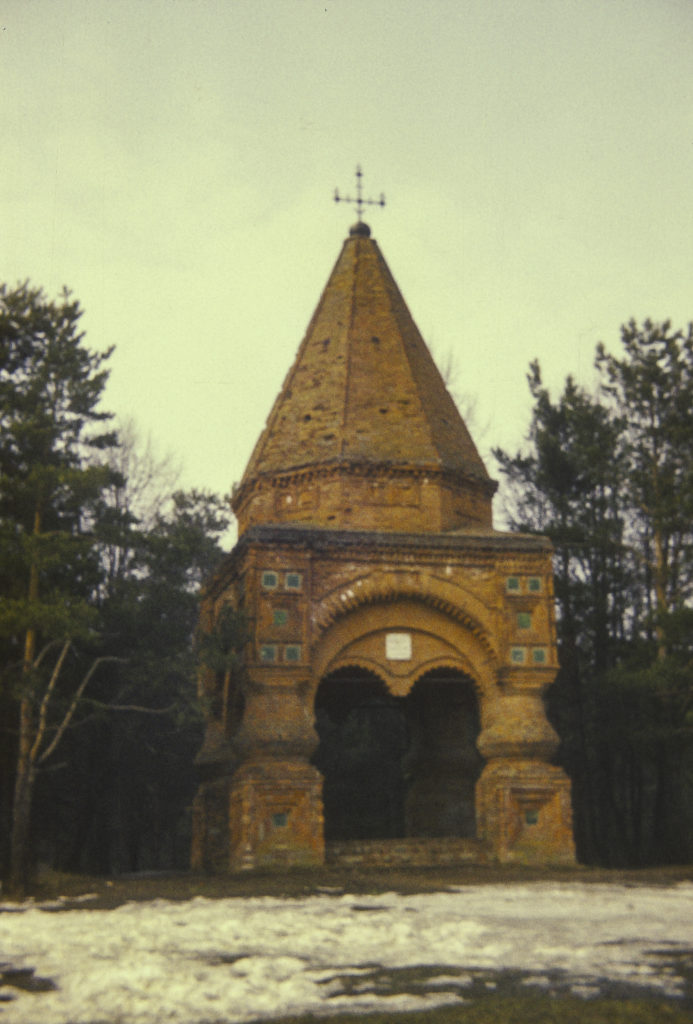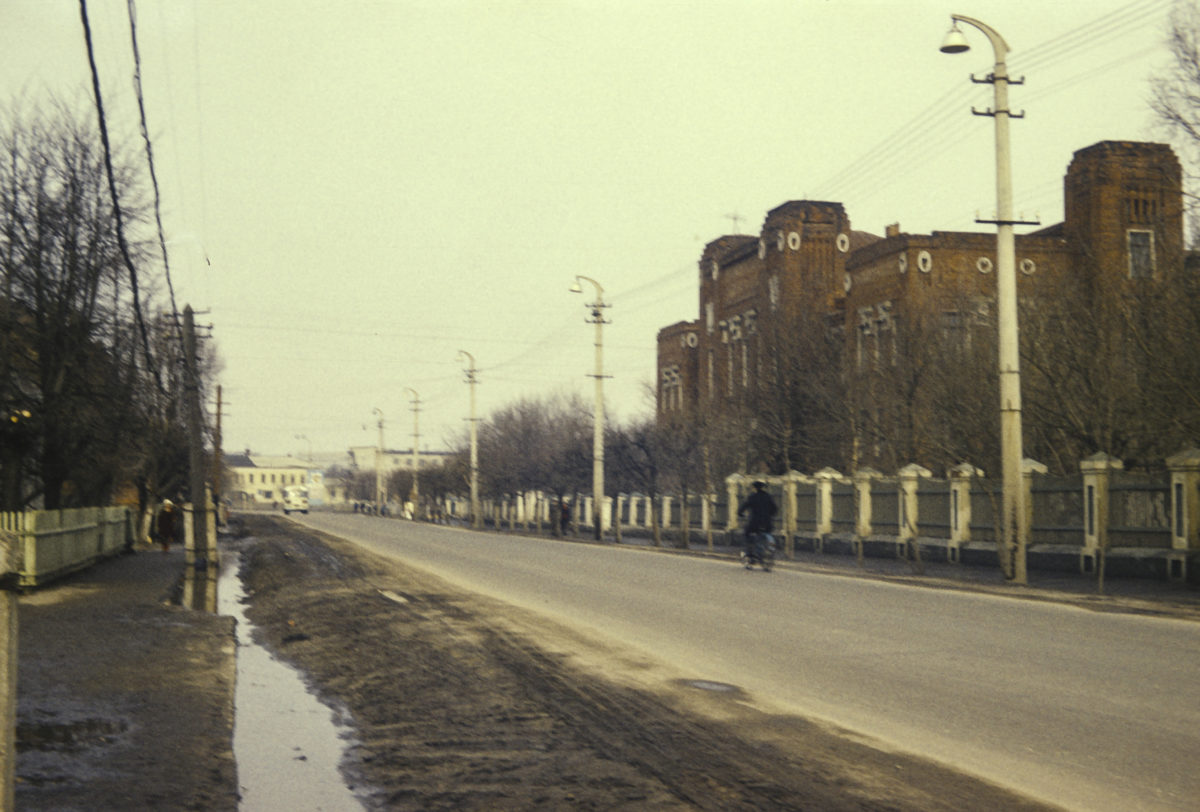One winter day, one of my fellow American graduate exchange students, Larry Lerner, asked me if I wanted to join him in renting a car and going on an outing to Pereiaslavl-Zalessky, an Old Russian town 140 kilometers (87 miles) northeast of Moscow. I had no idea it was possible to rent a car in Moscow, and I hadn’t had the foresight to get an international driver’s license, but Larry had. Pereiaslavl-Zalessky was outside the 25-mile limit beyond which foreigners were not allowed to go without a pass, but we had no difficulty getting the pass. So, along with Larry, his wife Sue, his son Spencer, and another American graduate student, Jim Karambelas, I piled into a rented Moskvich and off we went. Except that the Moskvich broke down before we even got out of Moscow, and we had to get it fixed before we could go any further. Somehow we did get the repair done, but the delay that resulted made our stay in Pereiaslavl-Zalessky shorter than planned.
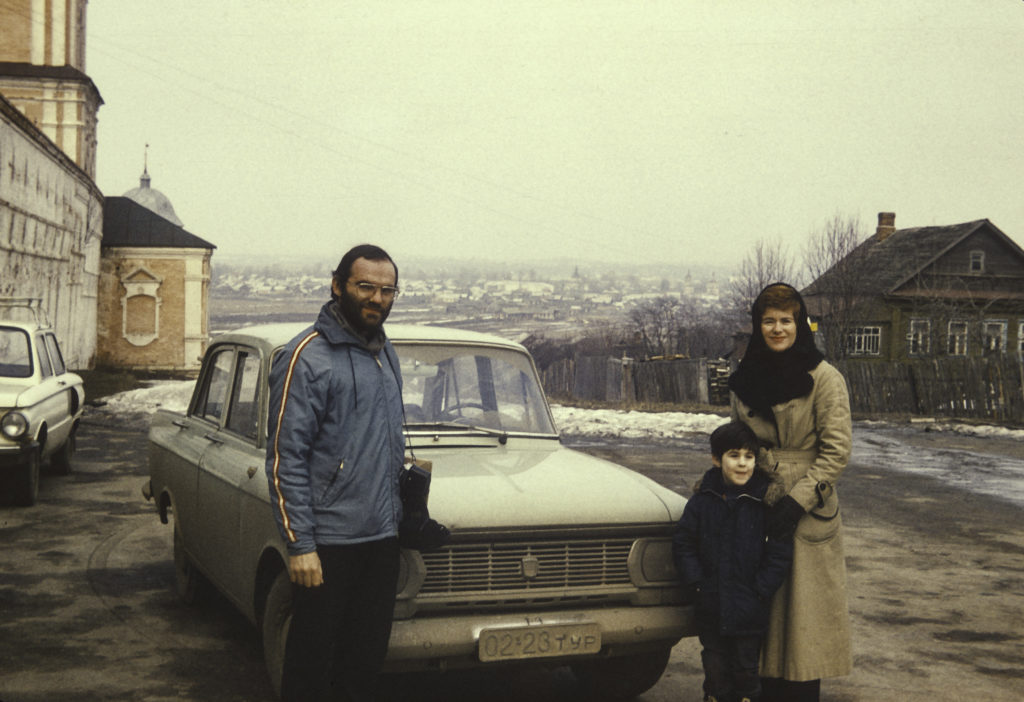
So why did we want to go to this small town in the hinterland of Moscow? Pereiaslavl-Zalessky is part of the so-called Golden Ring, a set of historic and picturesque towns to the north and east of Moscow which preserve some of Russia’s most noteworthy architectural and cultural treasures. We had already visited one of these towns, Zagorsk (now Sergiyev Posad), the closest to Moscow and the site of the Trinity-St. Sergius Monastery, in the fall; Pereiaslavl-Zalessky is the second closest to Moscow, so it was a logical choice for the next excursion.
Pereiaslavl-Zalessky was founded by Yuri Dolgoruky (“long-arm”), Grand Prince of Kiev, in 1152 CE. The Spaso-Preobrazhensky Cathedral, begun in that year, is one of the earliest examples of stone church architecture in the north-eastern Russia. Yuri is also credited with being the founder of Moscow (1147) as well as several other towns in northern Russia. These activities were harbingers of the eclipse of Kiev as the center of power and culture in Russia by the Vladimir-Suzdal region in the northeast, a process which culminated in the reign of Iuri’s son Andrei Bogoliubsky (“God-loving”, best translated as “pious,”) a sobriquet which he earned by building a record number of fine churches, and which otherwise was singularly inappropriate, given that he sacked Kiev in 1169 and plundered its treasures.
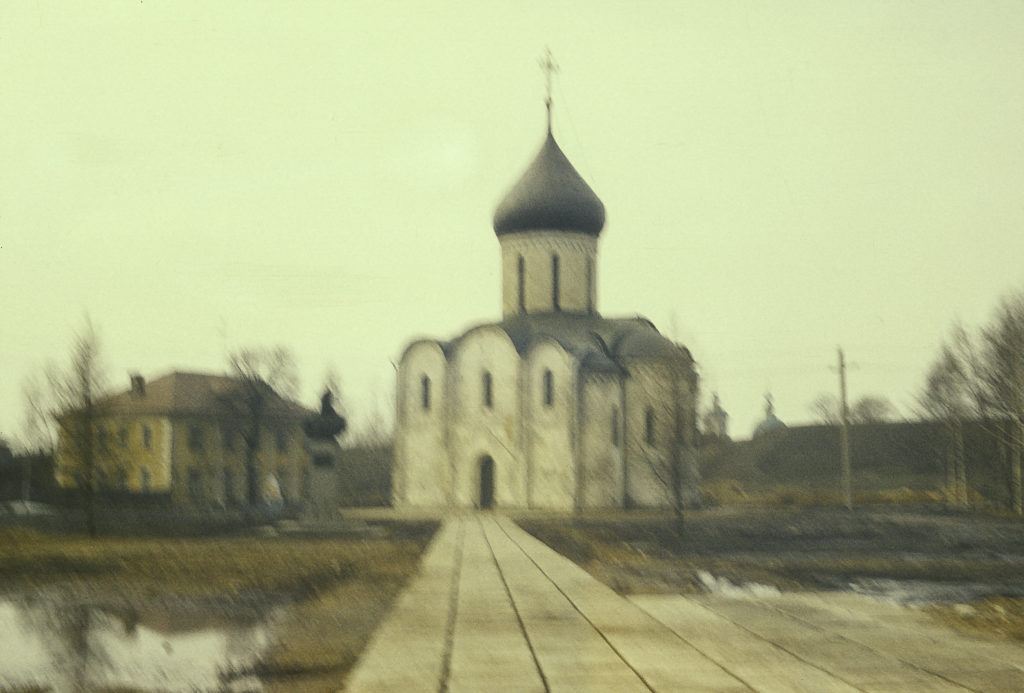
Anyway, from 1175 Pereiaslavl-Zalessky was the seat of its own small principality until it was gobbled up by Moscow in 1302. Pereiaslavl-Zalessky was also the birthplace of Alexander Nevsky, the great warrior and victor over the Swedes and Teutonic Knights, and he was baptized in the cathedral. In 2012 an Alexander Nevsky Museum opened in the town, but that was forty years too late for us.
The Mongol conquest of the thirteenth century brought terror and devastation to the town, and it continued to suffer from their depredations for the next couple of centuries. Moscow was also subject to their raids but suffered less than the other cities of the area because its princes served the khans of the Golden Horde as tax collectors and “enforcers” of the Mongol hegemony. During the Time of Troubles of the early 17th century, Pereiaslavl-Zalessky also underwent pillage and destruction by Polish armies.
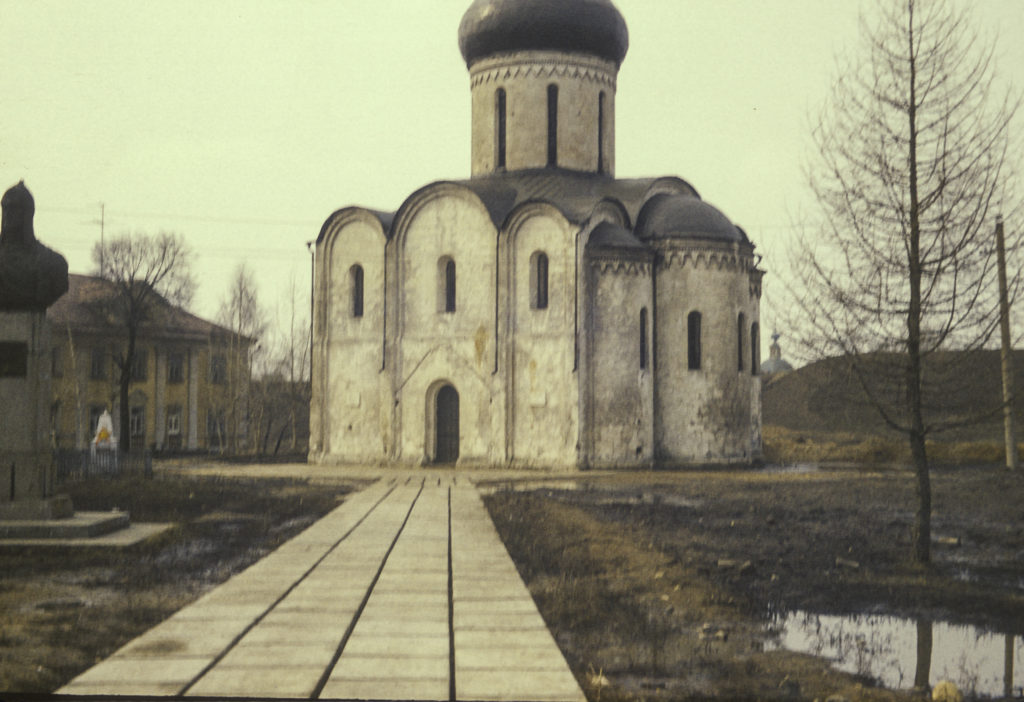
Somehow the Spaso-Preobrazhensky Cathedral survived all the vicissitudes of the Mongol conquest and the Polish invasions, though the original interior paintings have been lost, and now only bare walls remain. At one time a treasured 16th-century icon, the “Transfiguration”, was kept there, but it has been transferred to the Tretyakovsky Gallery in Moscow to ensure its preservation.
Pereiaslavl-Zalessky is located on the southeast shore of a large lake, Lake Pleshcheev, and in the late 17th century it became a playground for Peter I during the years when he was playing second fiddle to his half-sister, the Regent Sophia. Peter fancied himself a sailor, and he had a flotilla of boats built so he could play at maritime warfare. From these humble beginnings the Russian navy eventually evolved. There is a museum in Pereiaslavl-Zalessky which is devoted to this episode and even preserves one of the original boats.
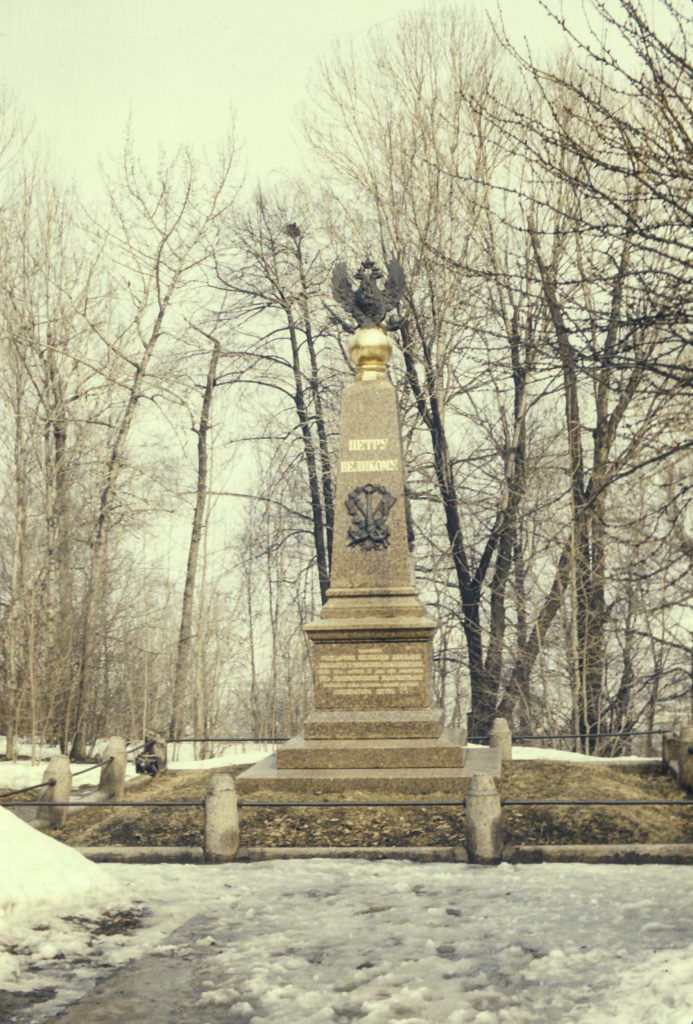
Lake Pleshcheev is considered to be one of the prettiest lakes in central Russia and is a big tourist draw for the area. There are numerous campsites, hotels and guesthouses on its shores, and in summer people come to go fishing, water-skiing and parasailing on the lake. They weren’t doing any of that when we were there in 1972, of course, except maybe ice-fishing.
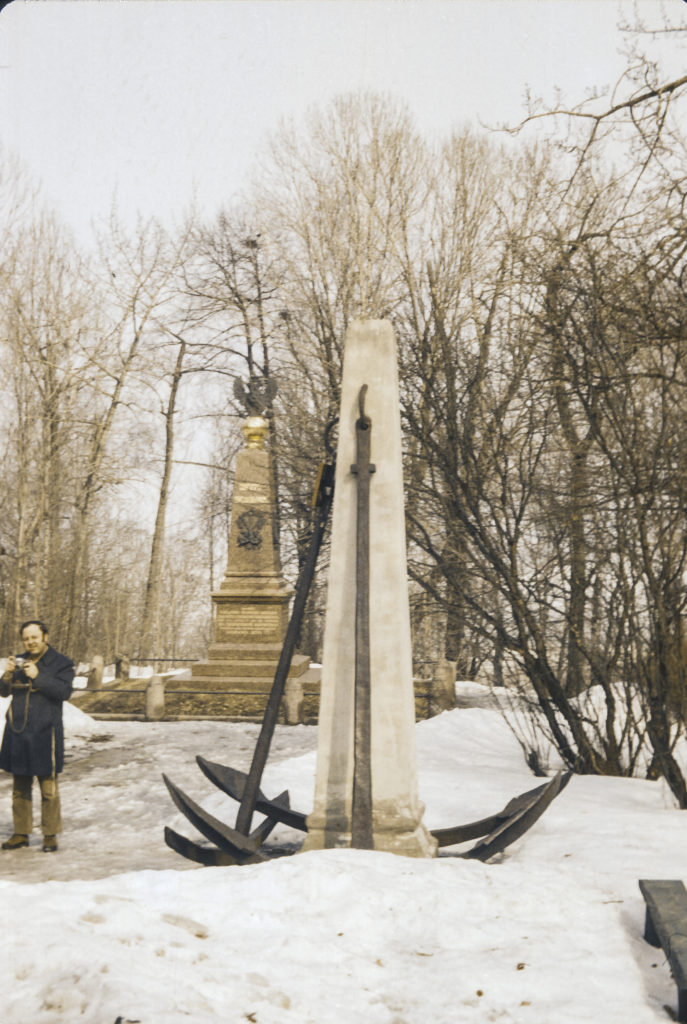
When we were in town in 1972, the main attraction, other than the Spaso-Preobrazhensky Cathedral, was the Goritsky Monastery, which was actually not a working monastery and had not been since the 18th century. Now, as in 1972, it is part of the Pereslavl Museum Reserve, a great open-air museum which encompasses the Spaso-Preobrazhensky Cathedral, the “Little Boats of Peter I” museum, an art gallery, an exposition hall and other churches and museums.
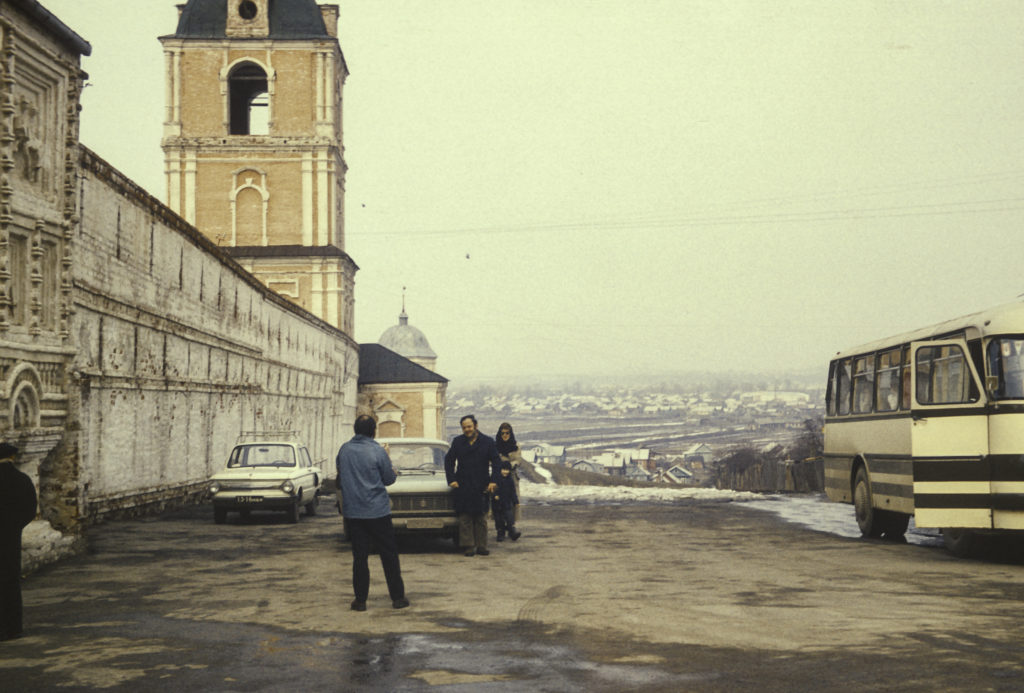
In fact, a whole slew of museums have sprung up in Pereiaslavl-Zalessky in the last few years, according to online sources. There is a museum of locomotives, of radios, of sewing machines, of kettles, of flatirons (!), a museum of peasant household furnishings called “Horse in an Overcoat”, and a museum of fairy tales. There is even a Museum of Cunning and Wit. None of these were there in 1972; they are all private establishments, which were not permitted under Soviet rule.
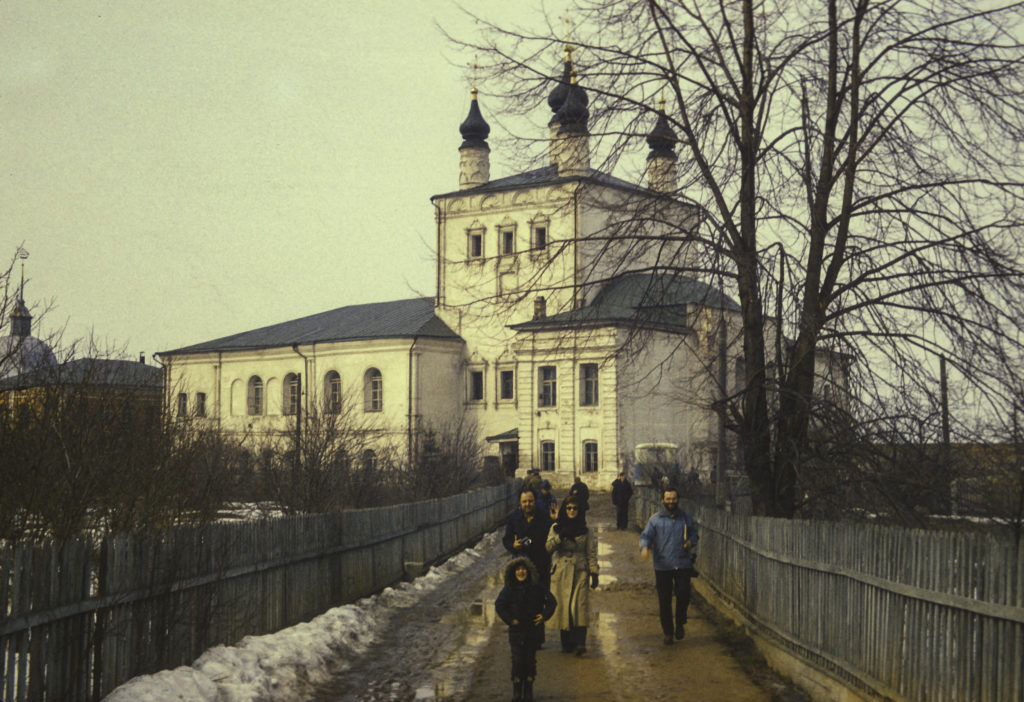
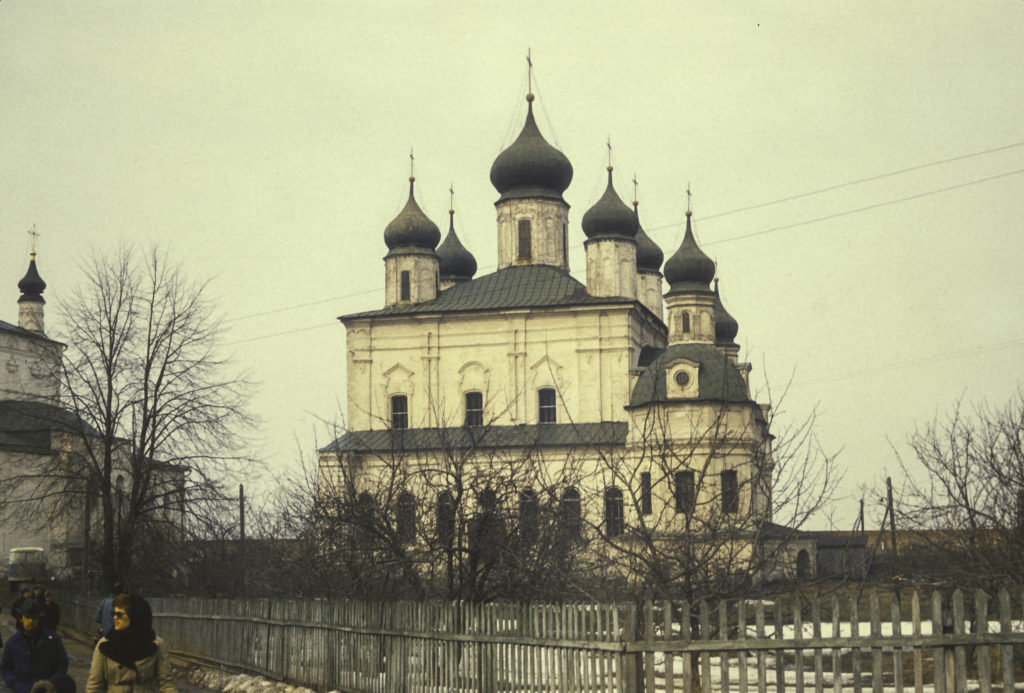
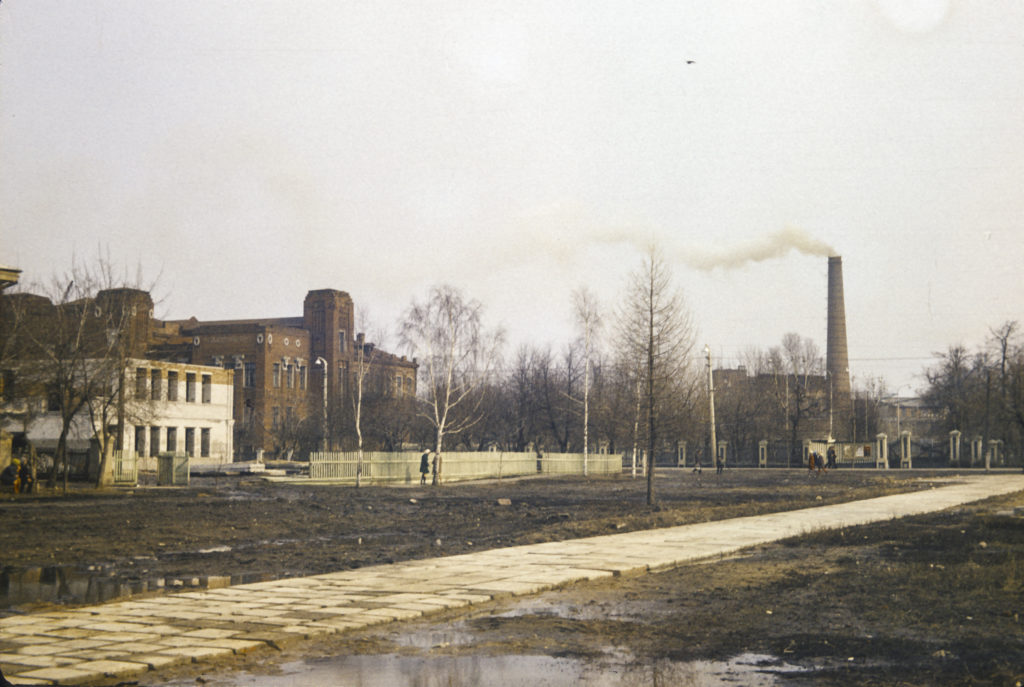
When we visited during a relatively warm spell in the winter of 1972, there was a lot of melting snow and any ground that wasn’t paved was a sea of slush and mud. The mud, along with the winter, was important in slowing down the Nazi advance on Moscow in 1941 – so one must admit it has its benefits.
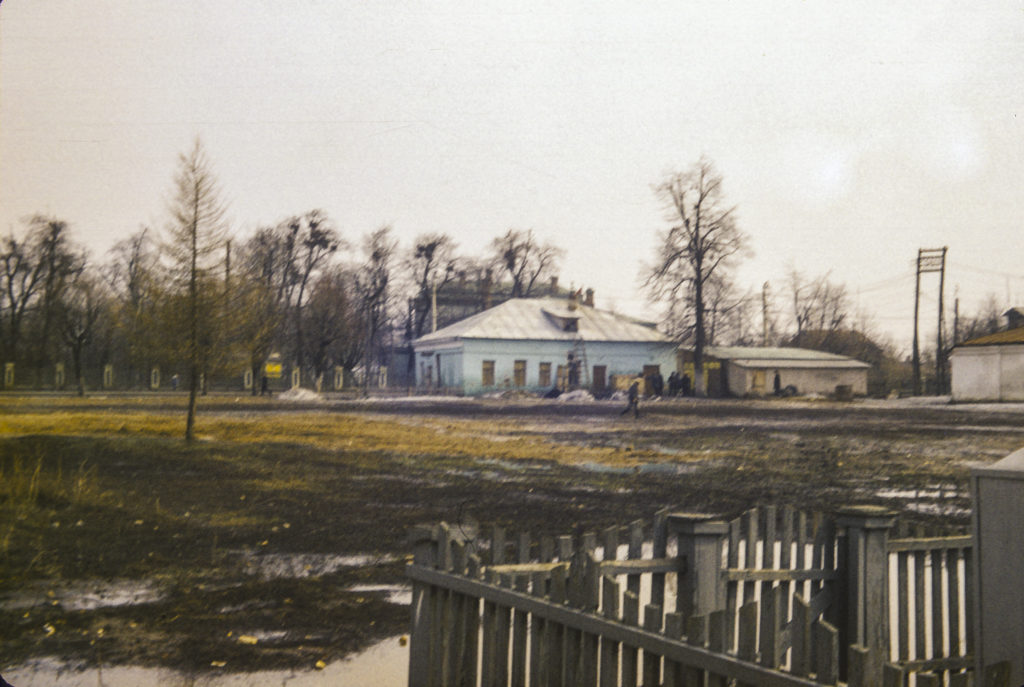
The most imposing building in town when we were there was a solid-looking brown multistory structure which, we were told, was a school. We never found out its name.
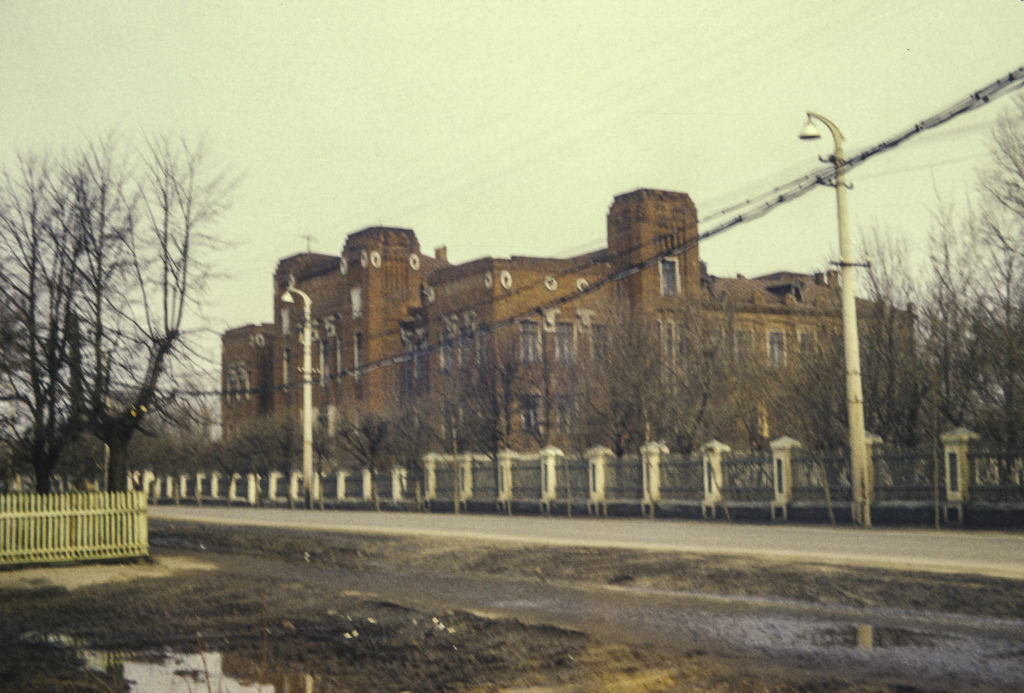
Along the road we also found this conical-capped structure, which looked like some sort of shrine or memorial. However, it may have marked the boundary of a botanical reserve or arboretum. There is in fact an arboretum in present-day Pereiaslavl-Zalessky, and it may have been there in 1972.
